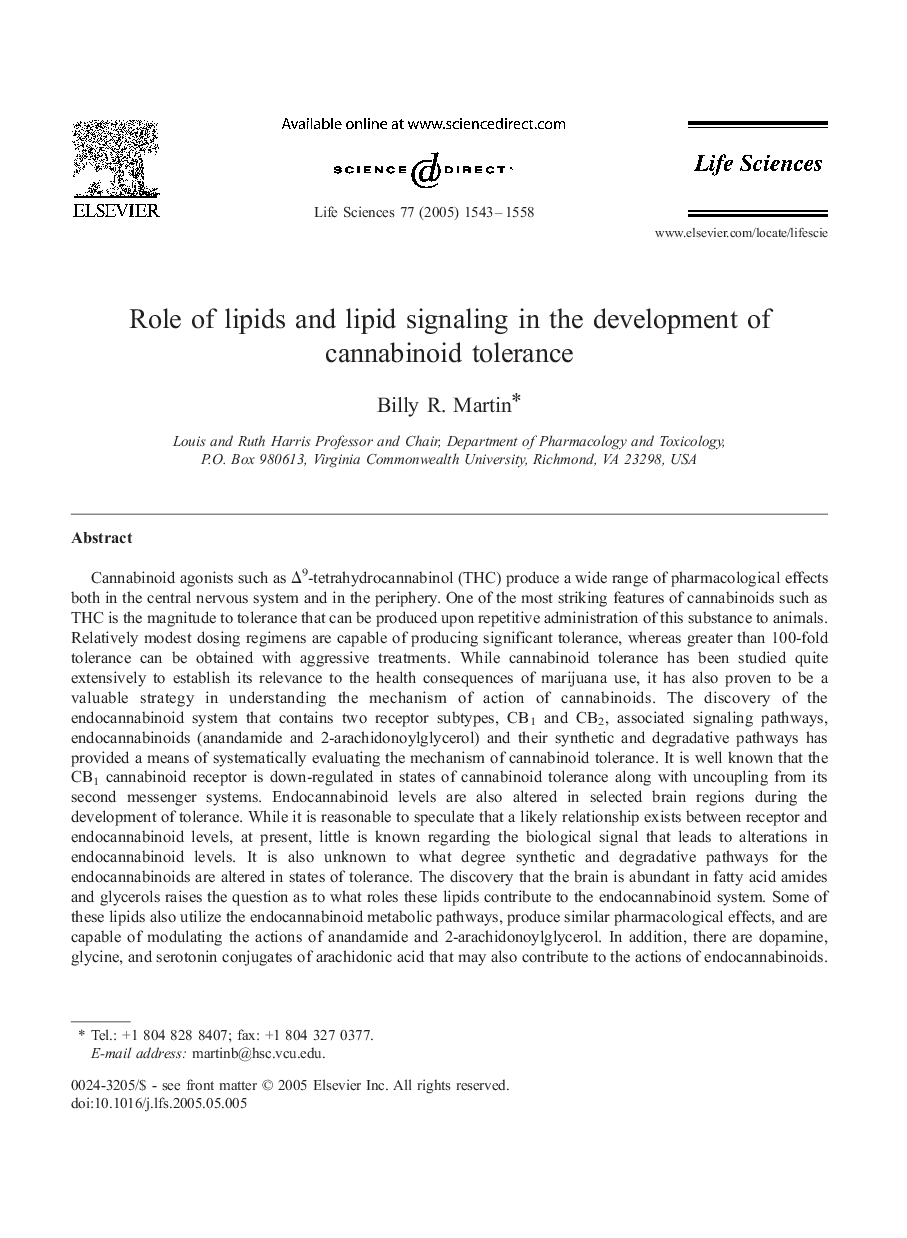| Article ID | Journal | Published Year | Pages | File Type |
|---|---|---|---|---|
| 9012709 | Life Sciences | 2005 | 16 Pages |
Abstract
Cannabinoid agonists such as Î9-tetrahydrocannabinol (THC) produce a wide range of pharmacological effects both in the central nervous system and in the periphery. One of the most striking features of cannabinoids such as THC is the magnitude to tolerance that can be produced upon repetitive administration of this substance to animals. Relatively modest dosing regimens are capable of producing significant tolerance, whereas greater than 100-fold tolerance can be obtained with aggressive treatments. While cannabinoid tolerance has been studied quite extensively to establish its relevance to the health consequences of marijuana use, it has also proven to be a valuable strategy in understanding the mechanism of action of cannabinoids. The discovery of the endocannabinoid system that contains two receptor subtypes, CB1 and CB2, associated signaling pathways, endocannabinoids (anandamide and 2-arachidonoylglycerol) and their synthetic and degradative pathways has provided a means of systematically evaluating the mechanism of cannabinoid tolerance. It is well known that the CB1 cannabinoid receptor is down-regulated in states of cannabinoid tolerance along with uncoupling from its second messenger systems. Endocannabinoid levels are also altered in selected brain regions during the development of tolerance. While it is reasonable to speculate that a likely relationship exists between receptor and endocannabinoid levels, at present, little is known regarding the biological signal that leads to alterations in endocannabinoid levels. It is also unknown to what degree synthetic and degradative pathways for the endocannabinoids are altered in states of tolerance. The discovery that the brain is abundant in fatty acid amides and glycerols raises the question as to what roles these lipids contribute to the endocannabinoid system. Some of these lipids also utilize the endocannabinoid metabolic pathways, produce similar pharmacological effects, and are capable of modulating the actions of anandamide and 2-arachidonoylglycerol. In addition, there are dopamine, glycine, and serotonin conjugates of arachidonic acid that may also contribute to the actions of endocannabinoids. A systematic examination of these lipids in cannabinoid tolerance might shed light on their physiological relevance to the endocannabinoid system.
Related Topics
Health Sciences
Medicine and Dentistry
Cardiology and Cardiovascular Medicine
Authors
Billy R. Martin,
